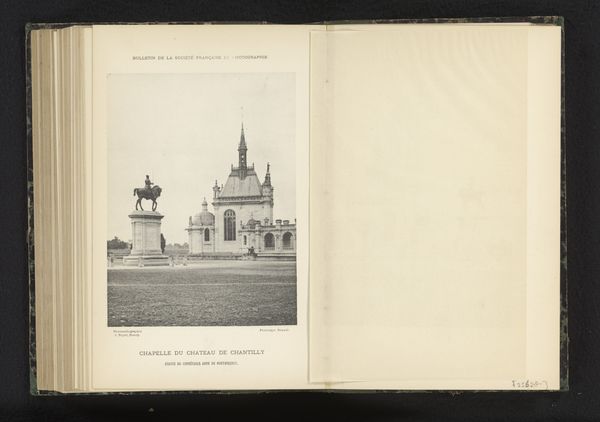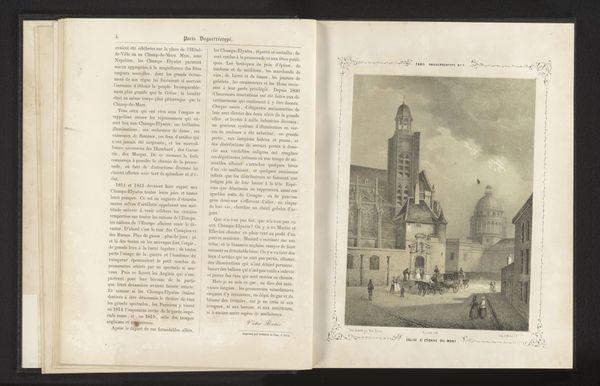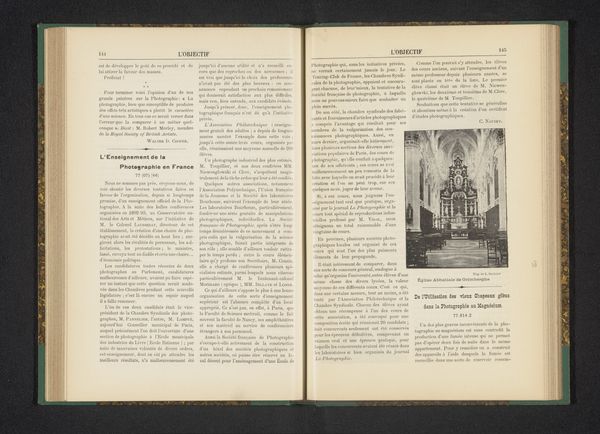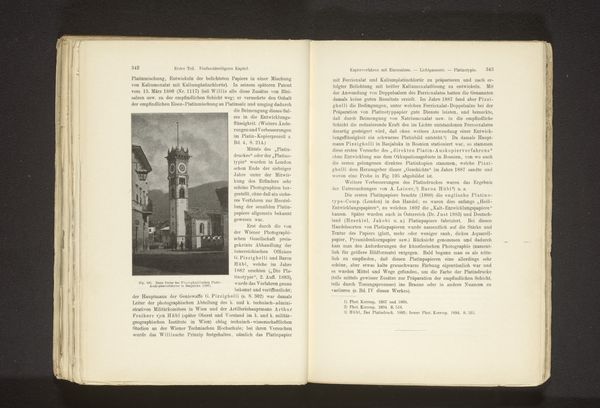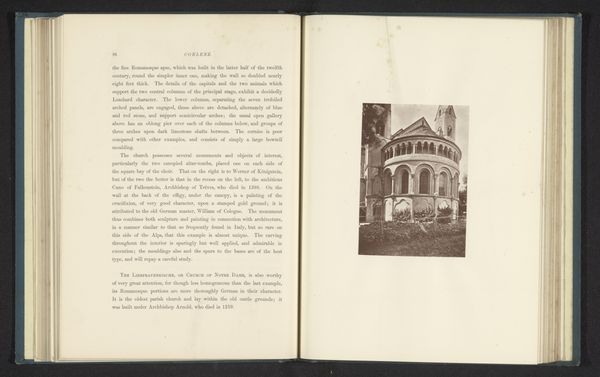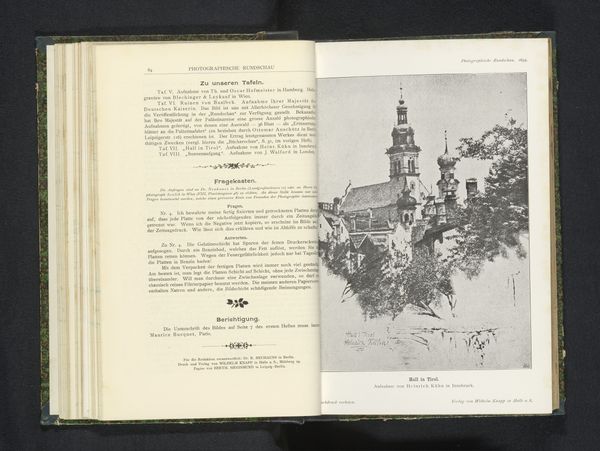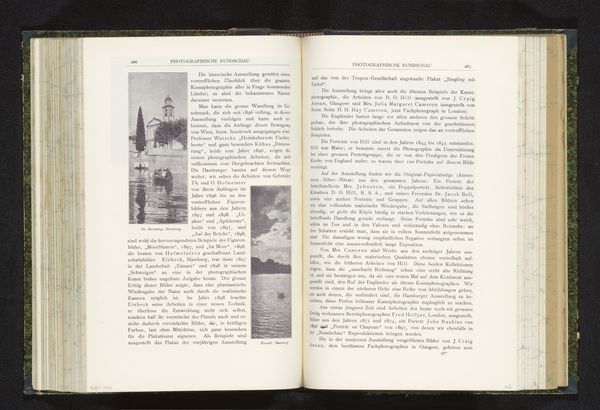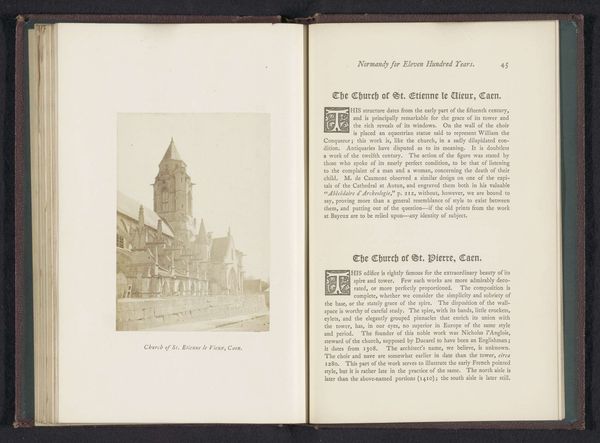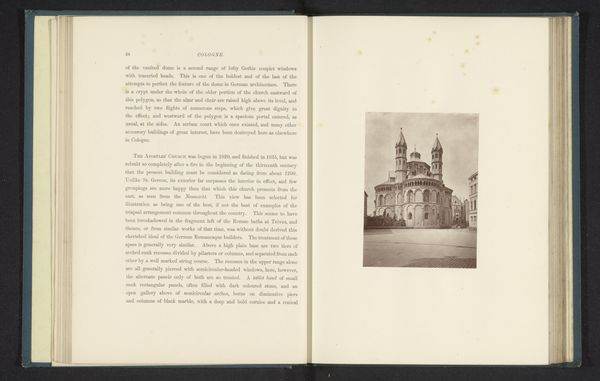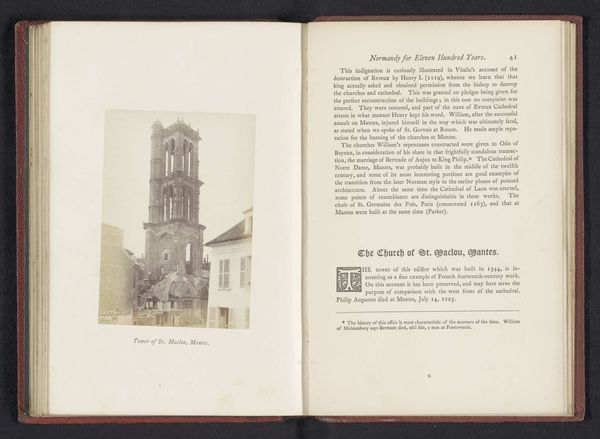
Standbeeld van Willem II en een gezicht op de Willibrordusbasiliek in Luxemburg before 1885
0:00
0:00
print, photography
# print
#
landscape
#
photography
#
cityscape
Dimensions: height 411 mm, width 302 mm
Copyright: Rijks Museum: Open Domain
Curator: Looking at this fascinating photographic print, likely from before 1885, presents two distinct vignettes: "Standbeeld van Willem II en een gezicht op de Willibrordusbasiliek in Luxemburg" it's called. On the one hand, a statue of Willem II, and on the other, a basilica. Editor: My first impression is one of solidity, almost architectural. Even the equestrian statue feels firmly rooted, mirroring the strong verticality of the basilica. The monochromatic palette lends it a certain gravitas. Curator: I agree, it’s about asserting power and presence. Notice how the statue positions Willem II above the people, quite literally elevated as an unquestionable figure. It is strategically juxtaposed alongside a building of equal prominence to affirm his status, with the cathedral being as crucial to cultural dominance as the man himself. Editor: And how those wreaths, encircling the monument's base, speak of commemoration. In placing these images together, what do you read of the culture of remembrance and its evolution in Luxemburg at that time? Curator: I would argue that it reflects an early moment of identity consolidation, where political leaders and religious architecture reinforced prevailing power dynamics, framing a visual narrative about legitimate governance through explicit spatial representation. It would suggest cultural continuity and spiritual foundations rooted in older European imperial ideologies. Editor: I see. There is a fascinating dance here between temporal authority and a supposedly eternal faith. However, considering the turbulent historical contexts, these kinds of representations must inevitably have been more tenuous—fraught with ideological fractures below a veneer of unity. Curator: Precisely! By understanding its context, the imagery isn't simply picturesque. Rather it speaks to how societies symbolically build and negotiate their ideologies, constructing and solidifying a sense of self. Editor: Exactly, in deciphering all those layers beneath the surfaces of photographs like this one, we unlock stories, meanings and continuities. Curator: I hope it enables those of you listening to interrogate these artworks not just for what you see, but also to imagine all you might unearth when considering everything *beyond* what meets the eye.
Comments
No comments
Be the first to comment and join the conversation on the ultimate creative platform.
